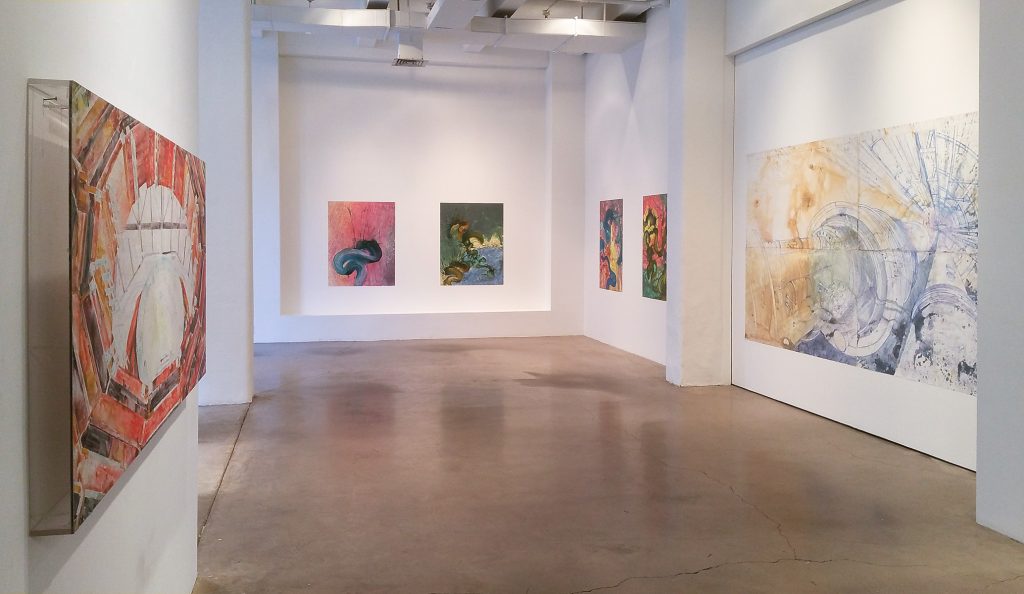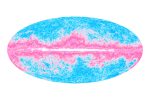
Resonators – 524W26 Gallery
524 West 26 Street
New York NY 10001
Organized by Places for Art and Science
http://places-art-science.org/
March 1 – 25, 2017
3-person show:
Jonathan Feldschuh
Stephen Pusey
Lily Jue Sheng
Particles and Colliders
The show Resonators at 524 Gallery in Chelsea provides the first opportunity for me to present works together from two series that deal with high-energy physics. My new series Particles is an investigation into the interactions of subatomic particles inside an accelerator. It follows my Large Hadron Collider series of paintings of the machinery of the largest accelerator in the world, the LHC at CERN. The collider paintings were most recently exhibited at the National Academy of Sciences in Washington, D.C. In the new series, I am attempting to depict the super-small world of high energy collisions, filled with virtual particles, quantum loops, and hadronic jets. The paintings are executed in acrylic paint on transparent mylar, and feature splashes and splatters from a very dynamic application of the paint with large house-painter’s brushes. I work on both sides of the surface. There are subtle pencil and ink marks which I use to suggest three-dimensionality of the swirling particle traces. I am at the beginning stages of developing a formal vocabulary for these pieces, in which different parts of the theory of subatomic particles correspond to specific formal elements of the paintings. I have been reengaging with the theory of the Standard Model, and studying the technical results from colliders like the LHC. In this exploration I am aided by my original undergraduate degree as a physicist. Although a complete understanding of these theories requires a long journey of graduate study, I am still inspired to try to visualize particles in a new way. Some of the paintings depict particle interactions that can be described with simple Feynman diagrams. Particles #20 (Beta Decay) shows a neutron decaying into a proton plus a short-lived W– particle, which nearly immediately decays into an electron and an electron neutrino. Other paintings suggest much more complex processes that might arise in the extremely high-energy collisions of an accelerator like the LHC, where the huge energies of the collider particles can allow the creation of many virtual particles, which then spawn jets of subsequent particles as they decay to more ordinary matter.
Jonathan Feldschuh
February, 2017
